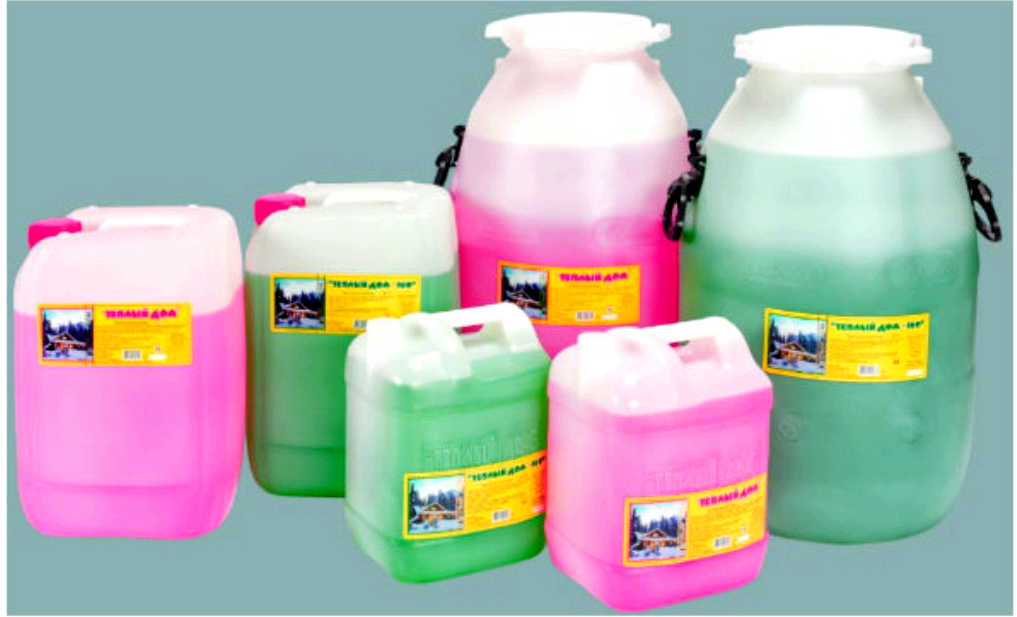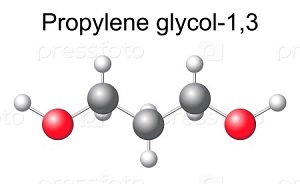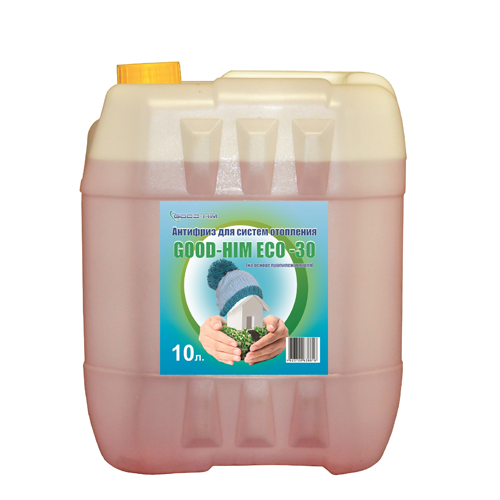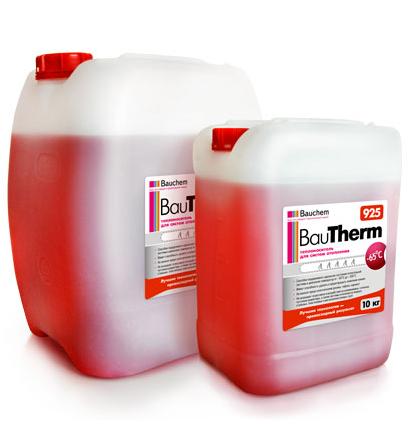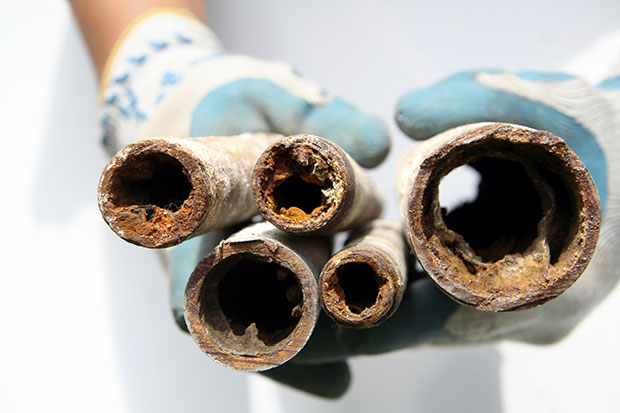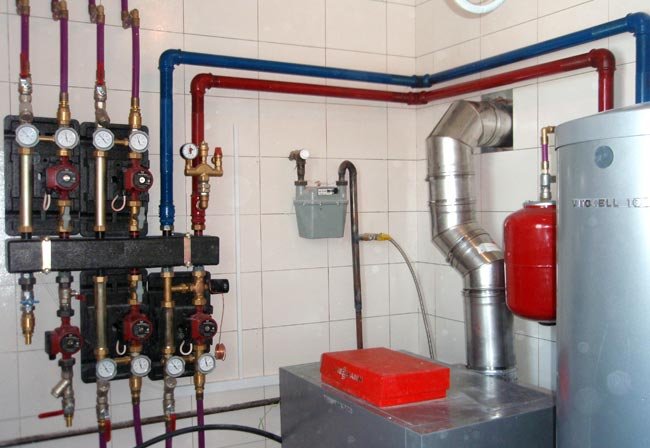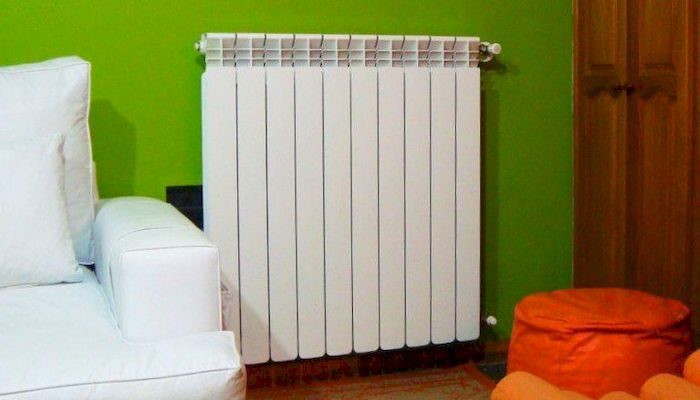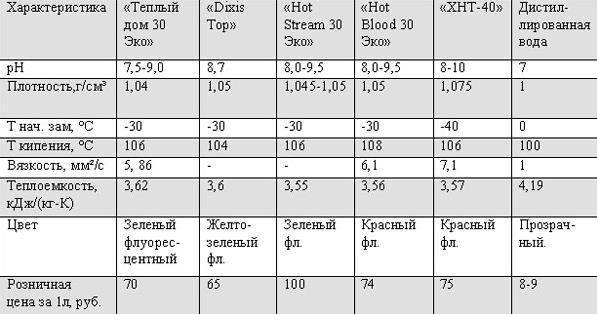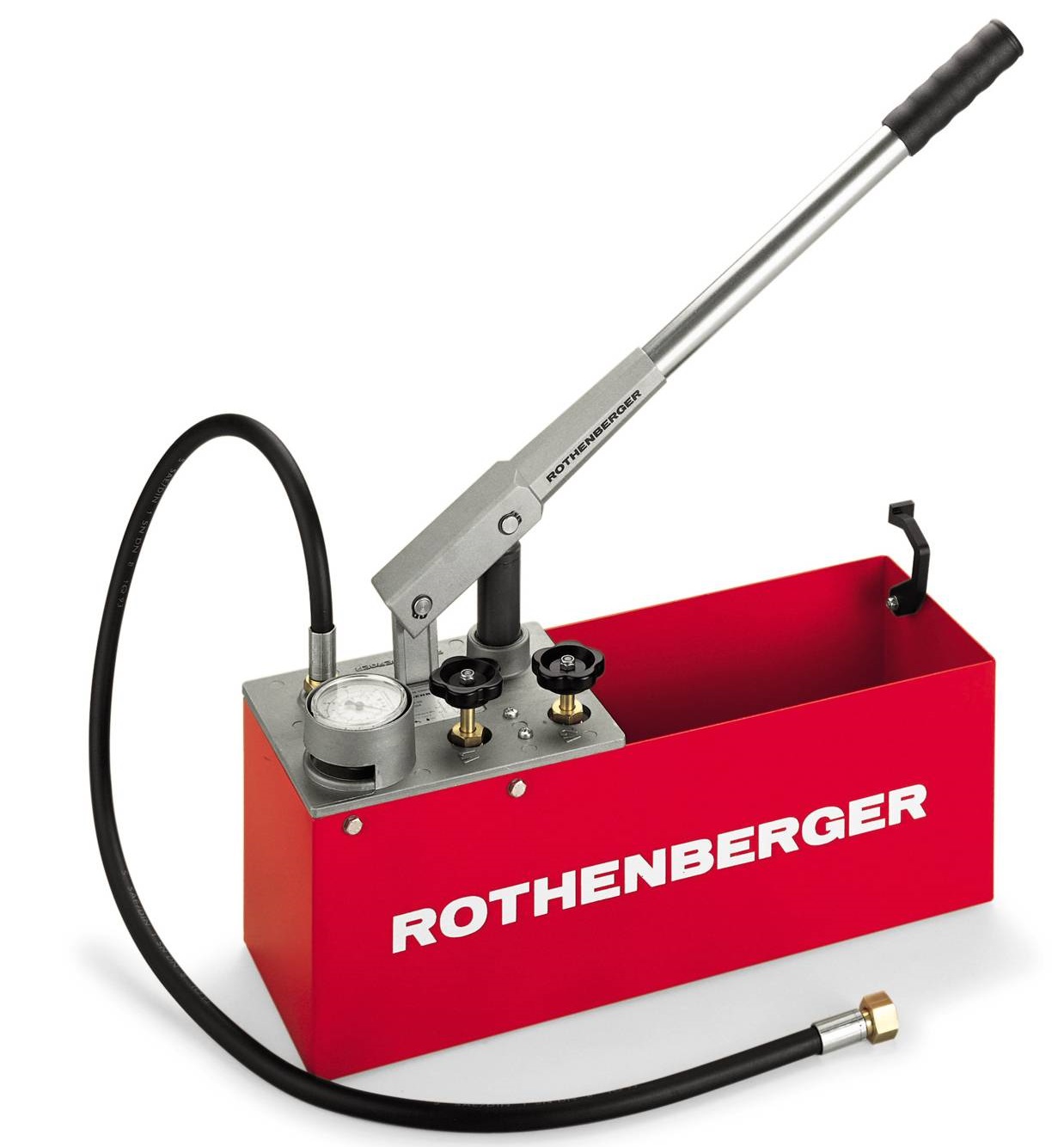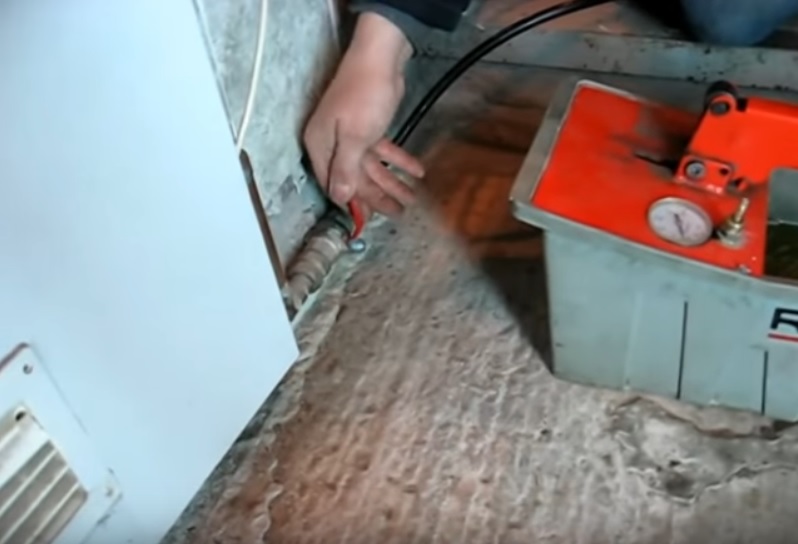Additive to the heating system. Coolants-antifreeze based on ethylene glycol. When to Choose Ethylene Glycol Antifreeze
Water heating systems - both radiator and underfloor heating - use liquid to transfer heat. And this is not only water, although it is used in most cases (68% of the total number of systems). Antifreezes are also used - special anti-freeze liquids based on ethylene glycol and propylene glycol. Additives have also been added to them that reduce chemical activity and improve some other characteristics of these liquids.
For underfloor heating, the same compounds that are poured into the radiator system can be used, but be sure to check compatibility with underfloor heating before buying. The properties of antifreeze depend on the additives added and can vary quite a lot, so every time you are interested in the full list of properties of antifreeze liquids.
With what kind of coolant it will be filled, it is necessary to determine in advance, even before the calculation stage. AT general case all calculations are carried out for water, and when using antifreezes, everything must be considered taking into account their characteristics. For example, the overall performance of the pump should be increased by 10-15%, and the pressure in general by 60-65%. The length of the contours or the diameter of the pipes will also change, since antifreezes have a lower heat transfer. In addition, a large extension of the system is required to transfer the required amount of heat. The type of coolant is also important when choosing equipment and pipes: not everything is compatible with antifreezes, and some, on the contrary, can only be used with antifreeze liquids.
What is the best coolant?
There is no definite answer to this question. As always, there are several aspects that need to be taken into account in each specific case to choose best option. In order for the choice to be conscious, it is important to know all the advantages and disadvantages of each of the liquids. Let us consider in more detail the properties of each of the coolants.
Water and distilled water
If you use ordinary untreated water, this is, of course, the cheapest, sometimes even free option. Moreover, it has other advantages:
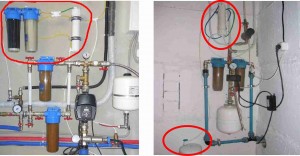
But the use of water as a coolant has its drawbacks. Some of them apply to underfloor heating systems only to some extent and, although they cause some harm, but insignificant:

As you can see, the use of water as a heat carrier in underfloor heating systems is a good and very inexpensive option. To make it even more attractive and ensure the almost complete safety of the system, you can pre-treat the coolant: soften the water. The easiest way is to boil it in a metal pan with an open lid. In this case, part of the salts will precipitate (unstable compounds of potassium and magnesium). But stable compounds cannot be removed by boiling. You can get rid of them by adding a little slaked lime, sodium orthophosphate or soda ash. But you can do even easier: use distilled water. When using this fluid for underfloor heating, you will automatically get rid of the danger of salt deposits. Distilled water costs a little, so this is a good choice.
antifreeze
Heating systems use antifreeze based on ethylene glycol and propylene glycol. Usually these are aqueous solutions of these polyhydric alcohols, to which additives are added to improve their properties.
Only special compositions for heating systems are used. antifreeze general purpose or automobiles cannot be poured into a warm water floor categorically!
When choosing antifreeze, remember that ethylene glycol is a strong poison. In case of poisoning, death occurs in 60% of cases, and in the remaining 40%, the kidneys are severely damaged. The lethal dose for an adult is 100-300 ml. Fraught with serious consequences, not only the ingestion of the substance, but also contact with the skin or mucous membranes. Vapors are toxic, although to a lesser extent: their chronic inhalation leads to irreversible consequences. However, antifreezes based on this ethylene glycol are used. They sell five times more than the safer but more expensive propylene glycol.
With all the danger, ethylene glycol is far from ideal as a coolant:
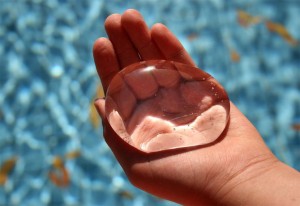
Of the advantages of using antifreeze based on ethylene glycol - freezing at very low temperatures:
- at a concentration of 65%, the freezing point is -65 ° C;
- at 45% it freezes at -30 o C.
Moreover, if the freezing threshold is exceeded, the liquid becomes gel-like, its volume does not increase. After the temperature rises, the state and properties of antifreeze are restored without any changes. All other properties - low corrosivity, formation of a protective film, small degree foaming is all due to the presence of special additives that can be added to the same water (if they are compatible with water). Since the warm water floor is a closed system, the use of this type of antifreeze is allowed (it is prohibited in open systems). But if possible, it is better to fill the system with a composition based on propylene glycol.
Propylene glycol is safe and approved as a food additive in some countries. The properties of this type of non-freezing liquid are also largely determined by the presence of additives, and from the “innate” ones - a low freezing point, not a solid, but a gel-like consistency, which does not harm the system in any way in case of freezing. This substance also has the lowest corrosivity of all liquids that are used as heat transfer fluids.

Anti-freeze liquids based on propylene glycol are more often painted in green colors; in many packages we have the prefix "Eco"
Why, then, formulations based on propylene glycol are bought five times less often? Because, firstly, they cost at least twice as much, and secondly, they usually have a higher freezing point. But in systems ignited with propylene glycol antifreeze, you can use materials that are less resistant to corrosion, which means you pay less for them.
If we talk about the best way to fill the heating system (and underfloor heating), then, if possible, distilled water should be preferred. This option is good for not very low winter temperatures or for permanent residence. But if you are periodically in a house or a dacha winter time leave unattended, then try to fill in the propylene-glycol "anti-freeze". This option is more expensive, but safer. The use of an ethylene glycol compound can only be justified in the case of extremely low temperatures. There is nowhere to go: if there is no safe composition that can withstand winter temperatures, you will have to take what is.

Rules for the operation of antifreezes and features of the system with them
Once again, we pay attention to the fact that it is necessary to consider the parameters of the system and select equipment, taking into account the type of coolant used. If you calculate and assemble the system under water, and then just fill in the “anti-freeze”, you will inevitably encounter problems:
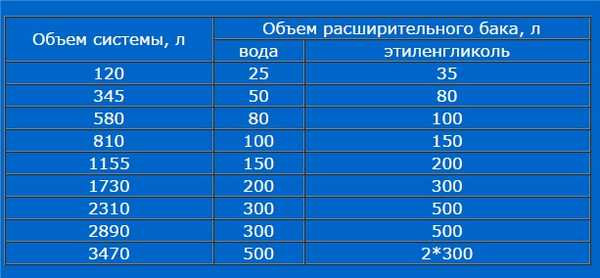
To avoid these troubles, it is necessary to take into account the use of antifreezes when planning, choose compatible equipment and chemically resistant auxiliary materials.

Results
If the use of antifreeze is unavoidable (low winter temperatures and intermittent living in the house), it is safer to use propylene glycol formulations. According to their characteristics, they are not inferior to ethylene glycol, however, they are more expensive, but they are absolutely harmless. In all other cases, it is better to use water (softened or distilled - your choice) as a heat carrier for a warm water floor. To insure against defrosting of the system in this case, lay polyethylene pipes in the screed - they normally tolerate several freezing cycles. But it must be said that liquid in a warm floor can freeze only at a floor temperature of -5 o C or -10 o C, and this is impossible, even if the system is stopped for a couple of days in extreme cold.
For correct and effective work heating systems must use a suitable heat transfer medium. There are several types of liquids for the heating system, the most popular of which is plain water. Although water is the cheapest coolant for a heating system, it can not always be used. Since this liquid freezes even in slight frost, there is a risk of pipes bursting during expansion. Therefore, in houses that are heated irregularly, other liquids are used as a coolant.
A good coolant for heating systems should ensure maximum efficiency of the heating boiler, and transfer as much heat as possible over a certain amount of time.
The main characteristics of the coolant:

The choice of the type of coolant is also affected by the cost of the product. Even a coolant that is ideal in all respects for a heating system, the price of which is very high, will not be in demand among consumers, since it will not provide a quick payback for the system.
The main types of coolants that are used in our country are water and antifreeze.
The design of the entire system and its efficiency depend on what kind of coolant you decide to buy for heating systems in your home. For example, for a private house can be used. Let us consider in more detail what advantages and disadvantages antifreeze or water has in the heating system, and what should be chosen for private households.
Water is an available coolant
 Most consumers use plain water as a heat carrier. This is due to its low price, absolute availability, and good heat transfer performance. Big Advantage water - its safety for people and environment. If for some reason a water leak occurs, its level can be easily replenished, and the leaked liquid can be eliminated in the usual way.
Most consumers use plain water as a heat carrier. This is due to its low price, absolute availability, and good heat transfer performance. Big Advantage water - its safety for people and environment. If for some reason a water leak occurs, its level can be easily replenished, and the leaked liquid can be eliminated in the usual way.
The peculiarity of water is that it expands when it freezes, and can damage radiators and pipes. If you do not know which coolant to choose for the heating system in the house, consider the situations associated with the lack of heating. Water as a heat carrier can only be selected if the heating system is operating smoothly and constantly.
 It is not necessary to fill the heating system with coolant from the tap. Tap water contains too many impurities that will eventually settle in the pipes and cause them to break. Salt impurities and hydrogen are especially dangerous for heating systems. Salts react with metal surfaces and provoke the process of corrosion. In order to improve the quality of water, it is necessary to make it softer by eliminating impurities. This can be achieved in two ways: by exposure to temperature, or by a chemical reaction.
It is not necessary to fill the heating system with coolant from the tap. Tap water contains too many impurities that will eventually settle in the pipes and cause them to break. Salt impurities and hydrogen are especially dangerous for heating systems. Salts react with metal surfaces and provoke the process of corrosion. In order to improve the quality of water, it is necessary to make it softer by eliminating impurities. This can be achieved in two ways: by exposure to temperature, or by a chemical reaction.
![]() The temperature effect assumes the usual boiling. You need to boil water in a metal container without a lid, preferably with a large bottom surface. During heating carbon dioxide will be released into the air, and the salts will settle to the bottom. Chemical elimination of impurities occurs due to the reaction with soda ash and slaked lime. These substances make the salts insoluble in water and they precipitate out. Before pouring the coolant into the heating system, it must be filtered so that the sediment does not interfere with its normal operation.
The temperature effect assumes the usual boiling. You need to boil water in a metal container without a lid, preferably with a large bottom surface. During heating carbon dioxide will be released into the air, and the salts will settle to the bottom. Chemical elimination of impurities occurs due to the reaction with soda ash and slaked lime. These substances make the salts insoluble in water and they precipitate out. Before pouring the coolant into the heating system, it must be filtered so that the sediment does not interfere with its normal operation.
 Ideal for heating systems distilled water. The distillate is devoid of any impurities and does not require additional processing. Such water must be bought in the store, as it is produced only in an industrial way.
Ideal for heating systems distilled water. The distillate is devoid of any impurities and does not require additional processing. Such water must be bought in the store, as it is produced only in an industrial way.
Antifreeze - non-freezing coolant
 A special non-freezing coolant for heating systems, which is not afraid of sub-zero temperatures and does not expand when cooled, is called antifreeze. It has all the necessary properties for efficient heating, prevents metal corrosion, does not contain harmful salts and gases, and prolongs the life of heating devices.
A special non-freezing coolant for heating systems, which is not afraid of sub-zero temperatures and does not expand when cooled, is called antifreeze. It has all the necessary properties for efficient heating, prevents metal corrosion, does not contain harmful salts and gases, and prolongs the life of heating devices.
By pouring antifreeze into the heating system, you can safely leave the house in the winter for a long time.
 Even if the liquid freezes in your absence, it will turn into a mushy state, and in no way damage the elements of the heating system. When you return and turn on the boiler, the heating medium will again turn into a liquid without losing its technical properties. This is an ideal option for owners of country houses, as well as those people who often leave home.
Even if the liquid freezes in your absence, it will turn into a mushy state, and in no way damage the elements of the heating system. When you return and turn on the boiler, the heating medium will again turn into a liquid without losing its technical properties. This is an ideal option for owners of country houses, as well as those people who often leave home.
What is antifreeze made of?
The most common coolant for a heating system, reviews of which are mostly positive, is an ethylene glycol-based composition. This substance is most often used for the manufacture of non-freezing liquid.
 Ethylene glycol has several benefits:
Ethylene glycol has several benefits:
- withstands temperatures up to -70 degrees;
- does not freeze and does not expand when cooled;
- does not cause corrosion and leaves scale;
- can be diluted with water in case of leakage.
Glycol coolants for heating systems, the price of which is quite affordable, contain various additives that lubricate the heating system and extend its life. It has ethylene glycol antifreeze and its drawbacks. Among them are the following:
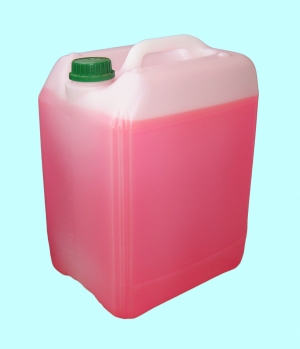
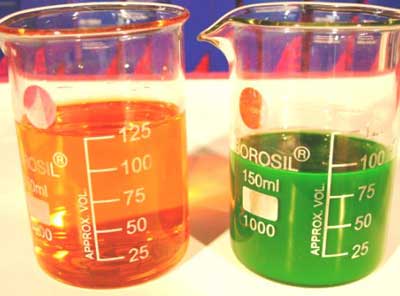 The disadvantages of ethylene glycol include its toxicity. Do not allow the substance to come into contact with the skin and inhale its vapors. Despite the fact that such a coolant is used only in closed-type systems with a single-circuit boiler, this fact significantly affects the choice of antifreeze for residential heating.
The disadvantages of ethylene glycol include its toxicity. Do not allow the substance to come into contact with the skin and inhale its vapors. Despite the fact that such a coolant is used only in closed-type systems with a single-circuit boiler, this fact significantly affects the choice of antifreeze for residential heating.
In addition to ethylene glycol, there are a number of substances on the basis of which an antifreeze liquid for a heating system can be made. Each owner decides for himself which antifreeze for heating is best suited for his home, given specifications and features of certain liquids.
Consider the most popular of them:
Choosing antifreeze
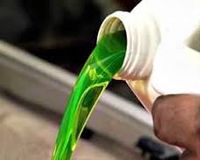 The choice of one or another coolant depends on several factors. For some, its technical characteristics and cost are important, others are worried about safety and convenience. Many rely on what coolants for heating systems have consumer reviews.
The choice of one or another coolant depends on several factors. For some, its technical characteristics and cost are important, others are worried about safety and convenience. Many rely on what coolants for heating systems have consumer reviews.
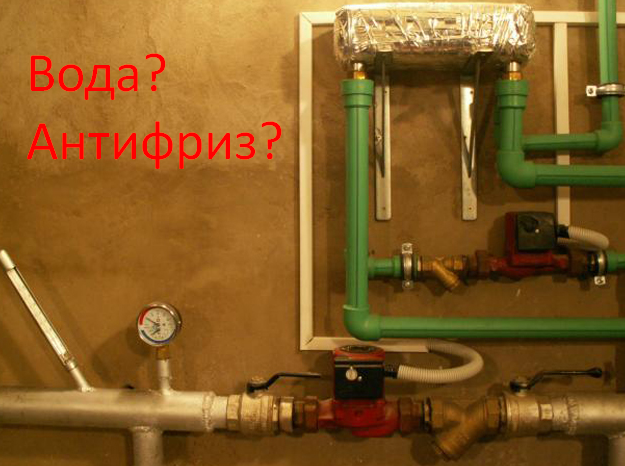 It is worth noting that it is necessary to choose a liquid for heating in advance, since the design of the system itself will depend on this. To calculate the amount of liquid needed for heating, you can use special formulas. But the best option will turn to specialists, especially if your house has a large area and several floors. Specialists can also, if required. Qualified engineers will select the most suitable type of heating that will provide you with heat at the lowest cost.
It is worth noting that it is necessary to choose a liquid for heating in advance, since the design of the system itself will depend on this. To calculate the amount of liquid needed for heating, you can use special formulas. But the best option will turn to specialists, especially if your house has a large area and several floors. Specialists can also, if required. Qualified engineers will select the most suitable type of heating that will provide you with heat at the lowest cost.
It is practically impossible to survive in winter without heating in our country, because a lot of time, effort and money are devoted to its device. The most common type of heating we have is water (liquid) heating. Its component is a coolant. How to choose a coolant for a heating system, how to download it - in the article.
What is a coolant and what should it be
The heat carrier in a liquid heating system is the substance by which heat is transferred from the boiler to the radiators. Our systems use water or special antifreeze liquids as a heat carrier. When choosing, you must be guided by several criteria:
Given these requirements, the most suitable liquid for the heating system is water. It is safe, harmless, has a high heat capacity, and the lines of operation are unlimited. But in those heating systems where there is a high probability of downtime in winter, water can do a disservice. If it freezes, it will burst pipes and/or radiators. Therefore, antifreeze is used in such systems. At negative temperatures, they lose their fluidity, but the equipment does not tear. So it is easy to choose a coolant for a heating system from this point of view: if the system is always under supervision and in working condition, you can use water. If a temporary residence (dacha) or it can be left unattended for a long time (business trips, winter holidays), if frequent and / or long power outages are possible in the region, it is better to fill in antifreeze into the system.
Features of using water as a heat carrier
In terms of heat transfer efficiency, water is an ideal heat transfer medium. It has a very high heat capacity and fluidity, which allows you to deliver heat to the radiators in the required volume. What water to fill? If, you can pour water directly from the tap.
Yes, tap water is not ideal in composition, it contains salts, a certain amount of mechanical impurities. And yes, they will settle on the elements of the heating system. But this will happen once: in a closed system, the coolant circulates for years, a small amount of replenishment is very rarely required. Therefore, a certain amount of sediment will not bring any tangible harm.

If the heating is open, the requirements for water quality, as a heat carrier, are much higher. Here there is a gradual evaporation of water, which is periodically replenished - water is added. Thus, it turns out that the concentration of salts in the liquid increases all the time. And this means that the sediment on the elements also accumulates. That is why purified or distilled water is poured into open-type heating systems (with an open expansion tank in the attic).
In this case, it is better to use distillate, but it can be problematic and expensive to get it in the required volume. Then you can fill in the purified water, which is passed through the filters. The most critical is the presence of a large amount of iron and hardness salts. Mechanical impurities are also useless, but it is easiest to deal with them - several mesh filters with a cell of different sizes will help to catch most of them.
In order not to buy purified water or distillate, you can prepare it yourself. First, pour and stand to settle most of the iron. Carefully pour the settled water into a large container and boil (do not close the lid). This removes hardness salts (potassium and magnesium). In principle, such water is already well prepared and can be poured into the system. And then top up with either distilled water or purified drinking water. This is no longer as costly as the initial fill.
Antifreeze for heating
In heating systems, in addition to water, special non-freezing liquids are poured - antifreezes. Usually these are aqueous solutions of polyhydric alcohols. Not so long ago, glycerin-based antifreeze appeared on our market. So now there are three types of antifreeze liquids for heating systems.
Types of antifreeze liquids and their properties
Antifreezes are based on two substances: ethylene glycol and propylene glycol. The first is cheaper, freezes at lower temperatures, but is very toxic. You can get poisoned not only by drinking, but even by simply soaking your hands or breathing in fumes. The second non-freezing coolant for the heating system is based on propylene glycol. It is more expensive, but safer. Sometimes it is even used as food supplement. Its minus (except for the price) is that it loses fluidity at higher temperatures than propylene glycol.

Despite the high toxicity, ethylene-glycol coolants are more often bought. This is most likely due to the price - propylene glycol is twice as expensive. But ethylene-glycol antifreezes in their pure form are also chemically active, can foam, and have increased fluidity. Additives fight foam and activity, and increased fluidity is not corrected in any way. Paired with toxicity, it is a dangerous combination. If there is the slightest possibility somewhere, this antifreeze will leak. And since its vapors are poisonous, this will not lead to anything good. Therefore, if possible, use propylene glycol.
| Name | Substance | The weight | Operating temperature range | Beginning of crystallization | Thermal decomposition temperature | Life time | Possibility of dilution with water | Price |
|---|---|---|---|---|---|---|---|---|
| Dixis 65 | monoethylene glycol | 10 kg | -65°C ~ +95°C | -66°C | + 111°C | 10 years | Yes | 850 rub |
| Warm House - Eco | propylene glycol | 10 kg | -30°С to +106°С | -30°C | +170°С | 5 years | Yes | 1050 rub |
| Dixis TOP (Dixis TOP) -30 | propylene glycol | 10 kg | -30°С to +100°С | - 31°C | +106°C | 3 years | Yes | 960 rub |
| ANTIFROST based on glycerine | glycerol | 10 kg | -30°С to +105°С | 4 years | No | 700 rub | ||
| PRIMOCLIMA ANTIFROST based on propylene glycol | propylene glycol | 10 kg | -30°С to +106°С | -30°C | +120°C | 5 years | Yes | 762 rubles |
| THERMAGENT 30 | ethylene glycol | 10 kg | -20°С to +90°С | -30°C | +170°С | 10 years | No | 650 rub |
| Teplocom (glycerine) | glycerol | 10 kg | – 30°С to +105°С | 8 years | No | 780 rub |
Another important drawback is that ethylene glycol reacts very poorly to overheating, and overheating occurs at a fairly low temperature. Already at +70°C it forms a large number of sediment that settles on the elements of the heating system. Deposits reduce heat transfer, which again leads to overheating. In this regard, such antifreezes are not used in systems with solid fuel boilers.
Propylene glycol, on the other hand, is almost chemically neutral. It reacts less than all coolants with other substances, overheating occurs at higher temperatures and does not lead to such consequences.

Propylene-glycol coolant is safe, but more expensive and freezes at higher temperatures
At the end of the last century, antifreeze for heating systems based on glycerin was developed. It is a cross between ethylene and propylene coolants. It is safe for humans, but does not have a very good effect on gaskets, and also reacts poorly to overheating. In terms of price and temperature characteristics, it is approximately in the same range as propylene coolants (see table).
Features of systems with antifreeze as a coolant
When designing a heating system, it is necessary to initially take into account the coolant. This is due to the lower heat capacity of non-freezing liquids, as well as their other properties. If all the equipment was designed for water, and antifreeze is poured into it, the following problems may arise:
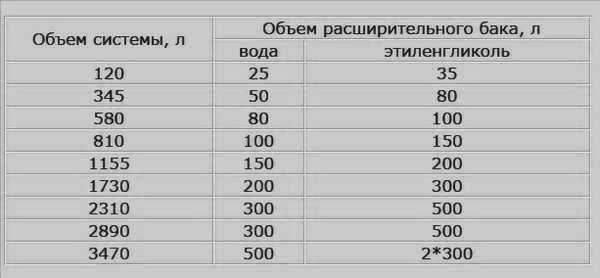
As you understand, the best coolant for a heating system is water. It is better in terms of performance and much cheaper. If the heating is threatened with defrosting, it is necessary to fill in antifreezes, but not for automobiles, but special ones for heating. In this case, if there is a sufficient amount of funds, it is better to use propylene glycol. Ethylene antifreeze is an extreme case. They are suitable for closed systems with special gaskets and automated boilers to prevent overheating.
To make it easier for customers to navigate, dyes are added to coolants. In ethylene - red or pink, in propylene - green, in glycerin - blue. After a while, the color may not become so intense or disappear altogether. This is due to the thermal destruction of dyes, but does not affect the properties of the antifreeze itself.
How to download coolant
Problems usually arise only with closed systems, since open ones are filled through an expansion tank. The coolant for the heating system is simply poured into it. It spreads through the system under the influence of gravitational force. It is important that when filling the system, all air vents are open.

There are several ways to fill a closed heating system with coolant. There is a way to fill without using technology - by gravity, there is with or special, with which they do.
Fill by gravity
This method of pumping coolant for a heating system, although it does not require equipment, takes a lot of time. It takes a long time to squeeze out the air and just as long to gain the desired pressure. By the way, we pump it up with a car pump. So the equipment is still required.
We find the highest point. Usually this is one of the gas vents (we remove it). When filling, open the tap to drain the coolant (the lowest point). When water runs through it, the system is full.
With this method, you can connect the hose from the water supply, you can pour the prepared water into the barrel, raise it above the entry point and so pour it into the system. Antifreeze is also poured in, but when working with ethylene glycol, you will need a respirator, protective rubber gloves and clothing. If a substance gets on a fabric or other material, it also becomes toxic and must be destroyed.

When the system is full (water ran out of the drain tap), we take a rubber hose about 1.5 meters long and attach it to the entrance to the system. Select the input so that the pressure gauge is visible. At this point, install a check valve and a ball valve. We attach an easily removable adapter for connecting a car pump to the free end of the hose. After removing the adapter, pour the coolant into the hose (keep it up). After filling the hose, using the adapter, we connect the pump, open the ball valve and pump the liquid into the system with the pump. You have to be careful not to let air in. When almost all the water contained in the hose has been pumped in, the valve closes and the operation is repeated. On small systems, to get 1.5 bar, you will have to repeat it 5-7 times, with large ones you will have to fiddle longer.
Filling with a submersible pump
To create a working pressure, the coolant for the heating system can be pumped with a low-power submersible pump of the Malysh type. We connect it to the lowest point (not the system drain point). We connect the pump through a ball valve and a check valve, we put a ball valve at the drain point of the system.
Pour the coolant into the container, lower the pump, turn it on. During operation, we constantly add coolant - the pump should not drive air.
In the process, we monitor the manometer. As soon as its arrow has moved from zero, the system is full. Up to this point, the manual air vents on the radiators can be open - air will escape through them. As soon as the system is full, they must be closed.
Next, we begin to raise the pressure - we continue to pump the coolant for the heating system with a pump. When it reaches the required mark, we stop the pump, close the ball valve. We open all air vents (on radiators too). Air escapes, pressure drops. We turn on the pump again, pump a little coolant until the pressure reaches the design value. Let's blow the air again. So we repeat until their air vents stop air coming out.
Using a pressure pump
The system is filled in the same way as in the case described above. In this case, a special pump is used. It is usually manual, with a container into which the coolant for the heating system is poured. From this container, liquid is pumped through a hose into the system. You can rent it from companies that sell pipes for plumbing. In principle, it makes sense to buy it - if you use antifreeze, you will have to change it periodically, that is, you will need to fill the system again.

This is a hand pump for pressure testing, with which you can pump the coolant for the heating system
When filling the system, the lever goes more or less easily, when the pressure rises, it is already harder to work. There is a pressure gauge on both the pump and the system. You can follow where it is more convenient. Further, the sequence is the same as described above: pumped up to the required pressure, bled air, repeated again. So until there is no air left in the system. After - we also start the circulator for five minutes (or the entire system, if the pump is in the boiler), bleed the air. We also repeat several times.
Heating in a private house is not just a combination of several pipes and radiators. This is a complex system that needs certain additional elements to work properly. At the same time, it is important to remember that heating is the key to comfortable living in most regions with a temperate and northern climate, because winter and autumn actually last at least 6 months in these areas. In order for the entire system to work properly during this time, it is important to take care of a high-quality coolant for it - there are two main types of such substances. Each of them has its own characteristics. How to choose Here you will find answers to all questions.
Coolant for the heating system: water, antifreeze - which is better?
A little about substances that carry heat
Before we get acquainted with the types of coolants and find out their characteristics, let's figure out what good and high-quality liquids of this type should be? What is it all about?

So, a coolant is a substance that is inside the heating system and is responsible for storing heat and redistributing it in a residential (or non-residential) room from a heating boiler through pipes and radiator batteries. As a rule, either water or antifreeze is used for this. Each of these substances has positive and negative aspects of use - unfortunately, there is no ideal coolant. That is why the decision about what is better to fill in heating system, should be taken depending on certain factors: the conditions for using the entire system, the quality of the heating equipment, the rest of the equipment, and so on.
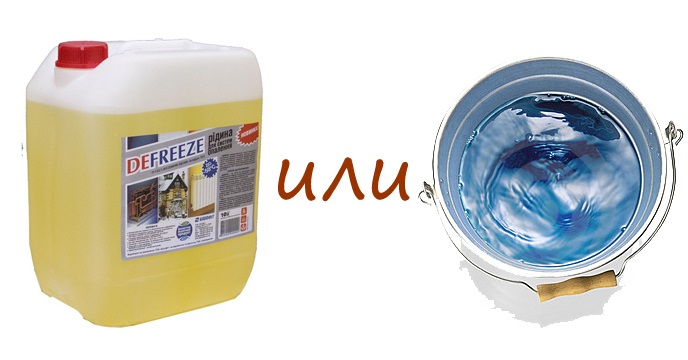
Attention! The operation of any coolant also strongly depends on the boundaries of a certain temperature range - in cases that are inappropriate for a particular substance, the coolant will simply refuse to work correctly, and the quality characteristics will change significantly.

But, despite the fact that ideal coolants do not exist, we still think: what would it be like if it existed?
In general, a substance that will store and transfer heat through a heating system must have the following properties:
- high heat capacity;
- good thermal conductivity;
- low viscosity;
- ability to endure maximum amount thermal energy with minimal heat loss for a certain time;
- freezing only at very low temperatures;
- stability of properties during use;
- lack of ability to cause rust;
- low toxicity;
- high ignition temperature;
- lack of tendency to form a layer of scale;
- inertia towards various materials used in the heating system;
- low price;
- long service life.
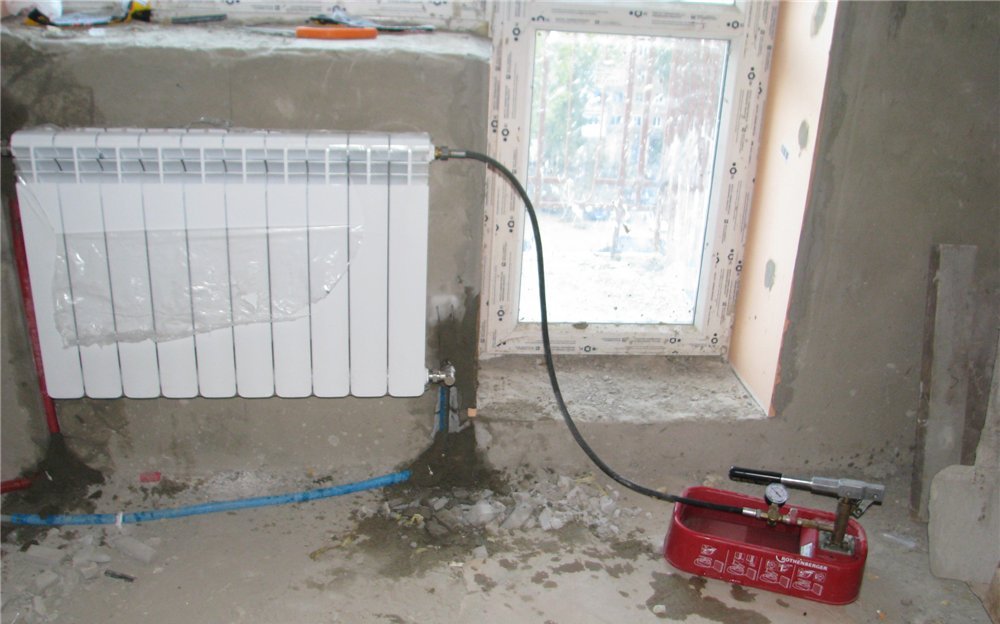
Unfortunately, the coolant that would meet all these requirements in full has not yet been invented. However, still right choice this substance can be made. But for this it is important to know what properties water and antifreeze have as coolants.
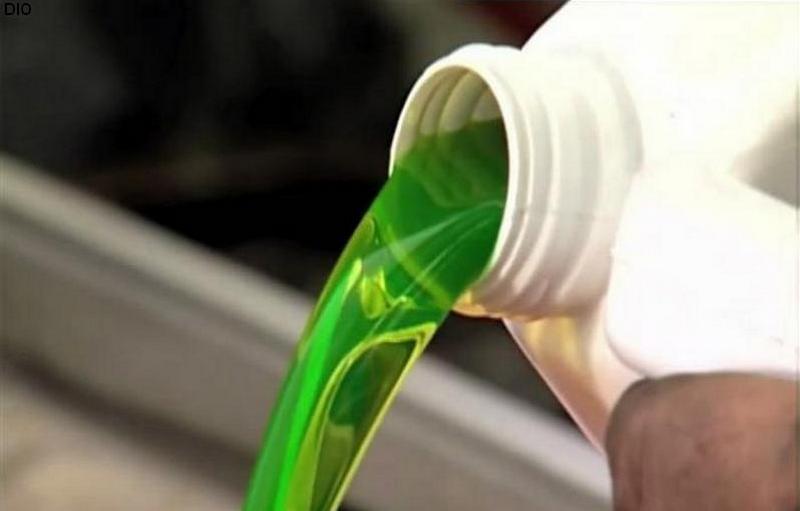
Water
Water is a unique and unique liquid in nature that expands both when heated and when cooled. Its high density, equal to 917 kg/m 3 , varies greatly with temperature. This property can do a disservice to the owner of the house - when expanding during freezing, the liquid can easily damage the heating system.
Water has a maximum heat capacity (1 kcal/(kg*deg)). This means that when a kilogram of this liquid is heated to a temperature of +90 degrees, and then cooled in a heating radiator to +70, as much as 20 kcal of thermal energy will enter this very radiator.

Water is perhaps the most accessible and cheapest type of coolant, which is also characterized by a high level of safety and is unlikely (under any conditions) to pose a serious threat to the health of the owner of the house and his family. And in the event of a leakage of the working fluid from the heating system, the deficiency can be easily filled by pouring ordinary tap water.
Interestingly, water is not just a combination of two hydrogen molecules with one oxygen molecule. In fact, it also contains other elements - these are metals, impurities of chlorine and various salts. Unfortunately, because of this, water can cause the appearance of various deposits inside the heating system and even lead to failure over time.
Flaws
The main disadvantages of water as a coolant:
- high corrosivity;
- scale formation;
- the possibility of destruction of the heating system in just a couple of days in case of accidental freezing of the liquid;
- Fluid must be changed annually.
The scaling capacity of water can be slightly reduced. This process is called softening. The easiest option is to simply boil water in a metal container without closing the lid. Some compounds that have no place in the heating system will settle to the bottom, carbon dioxide will come out. Unfortunately, only some substances can be removed by boiling - for example, unstable calcium or magnesium bicarbonates.
There is also a chemical method for improving the composition of water, which turns the soluble salts in the liquid into insoluble ones. It is carried out using slaked lime, sodium orthophosphate or soda ash. All of these additives can cause precipitation, which can be removed by simply filtering the water.
Attention! It is necessary to work with sodium orthophosphate carefully - the dosage of this substance should be strictly observed.
Antifreeze
Antifreeze or a mixture of ordinary water, additives and a certain component (propylene glycol or ethylene glycol) can be used as a coolant in the heating system of a private house. This substance has a lower freezing threshold, thanks to which it perfectly tolerates harsh cold winters. At the same time, antifreeze, unlike water, does not expand, does not harden and does not damage pipes even during an accidental shutdown of the system and strong cooling of the room. The liquid becomes gel-like and is unable to spoil the radiators, which have a much higher density. In this case, when heated, the substance returns to the liquid state with the preservation of its original properties.
On a note! Antifreeze due to special chemical composition it serves at least 5 years (water - only a year), while such a coolant does not cause scale or corrosion, since special additives are added to it. But it is worth remembering that these additives are not universal and are designed for certain types of alloys and metals. If you choose the wrong antifreeze, then it can damage some parts of the heating system.
In the northern regions and in territories with a temperate climate, two types of antifreezes are used - with freezing temperature thresholds of -30 and -65 degrees. Moreover, the latter type is easy to turn into the first, just diluting it with distilled water in a ratio of 1: 2.
Before you buy - let's take an interest in the composition
Table. Types of antifreeze for heating systems.
Base substance Characteristics of antifreeze
This is a cheaper and more common type of antifreeze. But at the same time, this liquid is quite toxic, so you need to work with it carefully, protecting skin, eyes and respiratory organs. Also, ethylene glycol, when in contact with zinc, easily reacts with it, so the composition of the alloy from which the entire heating system is made plays an important role here. Ethylene glycol in just one season is able to destroy galvanization, if any.
More expensive and safer type of antifreeze. A relative of technical propylene glycol - food - is used in medicine, pharmaceuticals, food industry, as it is completely safe for human health and the environment. That is why propylene glycol antifreezes can be used in any, including double-circuit heating boilers - if the substance gets into the water, then the residents of the house will not receive any harm. Also, this type of antifreeze performs in some way the same job as a lubricant, therefore, it has a beneficial effect on possible pumping systems. At the same time, the heat transfer of this substance is much higher than that of monoethylene glycol antifreeze.
Flaws
But antifreezes, as wonderful as they are, also have their drawbacks. Chief among them is the high sensitivity to high temperatures and overheating. In this case, antifreezes decompose, form acids and precipitates. The latter are able to form soot, hitting the heating elements. And this soot greatly affects the quality of heat transfer and causes another overheating. Acids, in turn, begin to react with the elements of the alloys from which the pipes of the heating system are made. The result is corrosion.
Other disadvantages of antifreeze:
- high fluidity, therefore, better sealing of the heating system is necessary to avoid leaks;
- the heat capacity is lower than that of water by 15%;
- viscosity is twice that of water;
- certain types of antifreeze are toxic and are used only in single-circuit heating boilers;
- the need to select a certain type of antifreeze for a specific alloy;
- the ability to foam under special conditions;
- antifreeze will have to be kept at home in case of an emergency leak in order to be able to add it to the system immediately.
Application rules
Also, antifreeze, unlike water, is more “scrupulous” in relation to the rules of use - the possibility of its use significantly depends on their observance.
- The pumps needed to circulate the coolant must be very powerful, otherwise it will be difficult for the antifreeze to move through the pipes. In some cases, it may be necessary to install an external supercharger.
- Pipes with a large diameter should be used, and radiators should also be large.
- Ventilators must not be automatic.
- Gaskets and seals used in the system can only be made of dense and chemical-resistant rubber or made of Teflon and paronite.
- When turning on the boiler, increase the heating temperature gradually. In this case, the temperature of the coolant should not exceed +70 degrees.
Antifreeze should never be used in the following cases:
- if the heating system in the house is an open type system;
- if the heating system is galvanized;
- if the heating boiler is able to heat the antifreeze by more than +70 degrees;
- if oil paint was used as a sealant for joints in the system, linen winding;
- if ion boilers are used.
Making the right choice
How to make the right choice regarding the substance responsible for the transfer of heat and heating the house? To do this, it is worth analyzing the operating conditions of the heating system and how and from what it is made. Ordinary water can become an optimal coolant, for example, if the temperature in the heating circuit (even in extreme cold outside) in the house is not lower than +5 degrees. Otherwise, it is better to think about buying antifreeze. At the same time, when choosing antifreeze, they take into account its temperature thresholds, composition, service life, environmental friendliness and safety, as well as the possibility of interaction with elements of the heating system.
On a note! It is best to choose propylene glycol antifreeze. It is not hazardous to health, and in a number of characteristics it is better than others.
In general, it is worth choosing a coolant even at a time when the project of the entire heating system is being developed. This will allow you to choose the right equipment - not so easy water system convert to frost protection.
How to properly fill the system?
So, the coolant is selected, the heating system is built. It remains only to pour the substance into the pipes and you can heat the house. How it's done?
Step 1. To the lowest point of the heating system, which is designed to fill and drain the coolant (check valve), we connect one end of the hose, while the other end is placed in a special container of the hand pump. This container is filled with coolant.
Step 2 We open the valve blocking the drain in the heating system.
Step 3 Using a hand pump, which can be purchased at any plumbing store, we pump the coolant into the pipe system. At the same time, we monitor the pressure inside them using a pressure gauge.
Step 4 Continuing to monitor the pressure readings on the pressure gauge, we pump the coolant into the system to a value of 1.5. After that, turn off the tap and turn off the pump.
Advice! Before fully pumping the system, be sure to check the performance of the check valve. To do this, after pumping a little coolant into the system, close the valve and leave it overnight, after which we check for leaks.
By the way, before pouring distilled water into the heating system, be sure to flush the pipes with plain water. In this procedure, both a newly assembled system and a long-standing one are subjected to this procedure. Otherwise, various impurities may remain in the radiators, which will degrade the quality of the water.
Video - Filling the coolant into the system
Which coolant is better - water or antifreeze - can be determined only by analyzing all of the above factors. Ordinary water is also suitable for someone, and someone will be able to heat their house only with the help of antifreeze. You should always soberly assess the capabilities of the equipment and its requirements - then there will certainly be no interruptions in heating in the house.
Coolant for the heating system: water, antifreeze - which is better?
In the photo - the consequences of freezing water in the battery
The choice of coolant for the heating system has always been a controversial issue. Coolants of various chemical composition are pumped into modern radiators, so the radiator must be appropriate. It can be not only purified water, which is the safest, most environmentally friendly and inexpensive coolant, but also a chemical liquid - antifreeze. Which coolant for the heating system will be better depends on the design itself, on the conditions in which it will be operated, etc.
Types of coolants for radiators
If we consider specifically which coolant is better and cheaper and safer for the heating system, then each of them has its pros and cons. For example, water in the event of a leak will not cause much trouble, and its deficiency can be easily replenished by filling the system with the missing amount of liquid. There is no cheaper liquid, so this is the most popular coolant. Of course, the water must be purified, because this liquid contains oxygen and salts, which can lead to corrosion. Many use rainwater, which compares favorably with tap, well and artesian water.
The disadvantage of water as a coolant is that the temperature regime is very important for it. As soon as the air temperature in the building drops below 0ºС, the liquid in the pipes freezes, which threatens to break or rupture the heating system.
For this reason, an “anti-freeze” was invented, which could become the best coolant for the heating system, if not for its cost. Pipes filled with such a coolant do not burst at low temperatures. This ability of antifreeze is useful for those premises where residents are not permanently located, for example, a country house. As a rule, antifreeze is designed to work at -30°C or even -65°C and turns into a gel, not a solid. However, it should be remembered that "non-merzayka" is not a universal coolant for a heating system, since additives added to the liquid are only suitable for certain materials from which heating systems are made. And if you use antifreeze incorrectly, it can cause corrosion.
Such a coolant as antifreeze has its main drawback, it has a shorter service life than water. The average service life of the antifreeze is 5 years (10 heating seasons), after which the fluid must be replaced, which leads to unnecessary expenses.
The choice of a heat carrier for heating is a responsible decision that will determine the quality of heating in the house, the service life of the heating system and financial expenses. The Terma-MSK online store offers a wide range of heat carriers for any heating systems made of aluminum, bimetal or cast iron at competitive prices.


